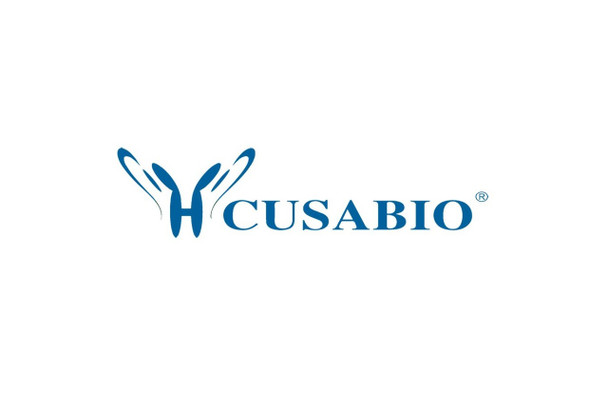Cusabio Human Recombinants
Recombinant Human Serine-threonine kinase receptor-associated protein (STRAP) | CSB-EP896713HU
- SKU:
- CSB-EP896713HU
- Availability:
- 13 - 23 Working Days
Description
Recombinant Human Serine-threonine kinase receptor-associated protein (STRAP) | CSB-EP896713HU | Cusabio
Alternative Name(s): MAP activator with WD repeats UNR-interacting protein WD-40 repeat protein PT-WD
Gene Names: STRAP
Research Areas: Others
Organism: Homo sapiens (Human)
AA Sequence: MAMRQTPLTCSGHTRPVVDLAFSGITPYGYFLISACKDGKPMLRQGDTGDWIGTFLGHKGAVWGATLNKDATKAATAAADFTAKVWDAVSGDELMTLAHKHIVKTVDFTQDSNYLLTGGQDKLLRIYDLNKPEAEPKEISGHTSGIKKALWCSEDKQILSADDKTVRLWDHATMTEVKSLNFNMSVSSMEYIPEGEILVITYGRSIAFHSAVSLDPIKSFEAPATINSASLHPEKEFLVAGGEDFKLYKYDYNSGEELESYKGHFGPIHCVRFSPDGELYASGSEDGTLRLWQTVVGKTYGLWKCVLPEEDSGELAKPKIGFPETTEEELEEIASENSDCIFPSAPDVKA
Source: E.coli
Tag Info: N-terminal GST-tagged
Expression Region: 1-350aa
Sequence Info: Full Length
MW: 65.4 kDa
Purity: Greater than 90% as determined by SDS-PAGE.
Relevance: The SMN complex plays a catalyst role in the assembly of small nuclear ribonucleoproteins (snRNPs), the building blocks of the spliceosome. Thereby, plays an important role in the splicing of cellular pre-mRNAs. Most spliceosomal snRNPs contain a common set of Sm proteins SNRPB, SNRPD1, SNRPD2, SNRPD3, SNRPE, SNRPF and SNRPG that assemble in a heptameric protein ring on the Sm site of the small nuclear RNA to form the core snRNP. In the cytosol, the Sm proteins SNRPD1, SNRPD2, SNRPE, SNRPF and SNRPG are trapped in an inactive 6S pICln-Sm complex by the chaperone CLNS1A that controls the assembly of the core snRNP. Dissociation by the SMN complex of CLNS1A from the trapped Sm proteins and their transfer to an SMN-Sm complex triggers the assembly of core snRNPs and their transport to the nucleus. STRAP plays a role in the cellular distribution of the SMN complex. Negatively regulates TGF-beta signaling but positively regulates the PDPK1 kinase activity by enhancing its autophosphorylation and by significantly reducing the association of PDPK1 with 14-3-3 protein.
Reference: "unr, a cellular cytoplasmic RNA-binding protein with five cold-shock domains, is required for internal initiation of translation of human rhinovirus RNA." Hunt S.L., Hsuan J.J., Totty N., Jackson R.J. Genes Dev. 13:437-448(1999)
Storage: The shelf life is related to many factors, storage state, buffer ingredients, storage temperature and the stability of the protein itself. Generally, the shelf life of liquid form is 6 months at -20?/-80?. The shelf life of lyophilized form is 12 months at -20?/-80?.
Notes: Repeated freezing and thawing is not recommended. Store working aliquots at 4? for up to one week.
Function: The SMN complex plays a catalyst role in the assembly of small nuclear ribonucleoproteins (snRNPs), the building blocks of the spliceosome. Thereby, plays an important role in the splicing of cellular pre-mRNAs. Most spliceosomal snRNPs contain a common set of Sm proteins SNRPB, SNRPD1, SNRPD2, SNRPD3, SNRPE, SNRPF and SNRPG that assemble in a heptameric protein ring on the Sm site of the small nuclear RNA to form the core snRNP. In the cytosol, the Sm proteins SNRPD1, SNRPD2, SNRPE, SNRPF and SNRPG are trapped in an inactive 6S pICln-Sm complex by the chaperone CLNS1A that controls the assembly of the core snRNP. Dissociation by the SMN complex of CLNS1A from the trapped Sm proteins and their transfer to an SMN-Sm complex triggers the assembly of core snRNPs and their transport to the nucleus. STRAP plays a role in the cellular distribution of the SMN complex. Negatively regulates TGF-beta signaling but positively regulates the PDPK1 kinase activity by enhancing its autophosphorylation and by significantly reducing the association of PDPK1 with 14-3-3 protein.
Involvement in disease:
Subcellular Location: Cytoplasm, Nucleus
Protein Families: WD repeat STRAP family
Tissue Specificity:
Paythway:
Form: Liquid or Lyophilized powder
Buffer: If the delivery form is liquid, the default storage buffer is Tris/PBS-based buffer, 5%-50% glycerol. If the delivery form is lyophilized powder, the buffer before lyophilization is Tris/PBS-based buffer, 6% Trehalose, pH 8.0.
Reconstitution: We recommend that this vial be briefly centrifuged prior to opening to bring the contents to the bottom. Please reconstitute protein in deionized sterile water to a concentration of 0.1-1.0 mg/mL.We recommend to add 5-50% of glycerol (final concentration) and aliquot for long-term storage at -20?/-80?. Our default final concentration of glycerol is 50%. Customers could use it as reference.
Uniprot ID: Q9Y3F4
HGNC Database Link: HGNC
UniGene Database Link: UniGene
KEGG Database Link: KEGG
STRING Database Link: STRING
OMIM Database Link: OMIM









